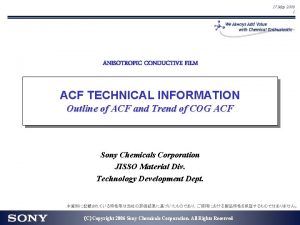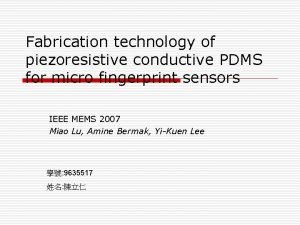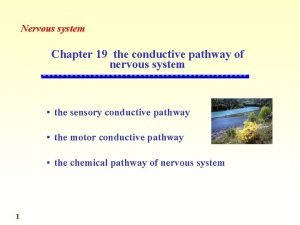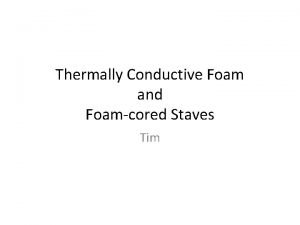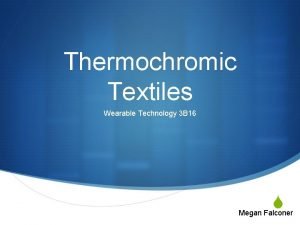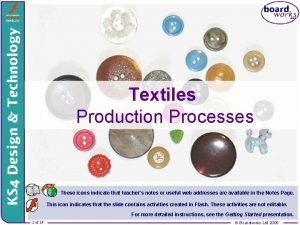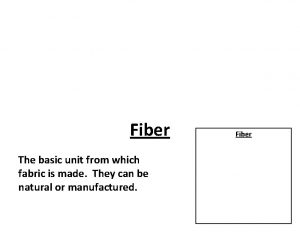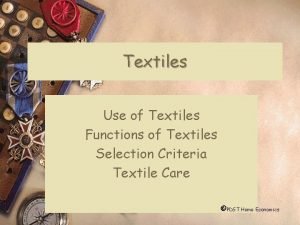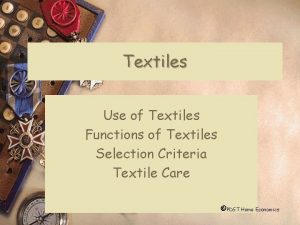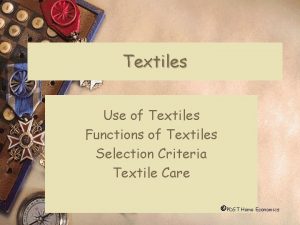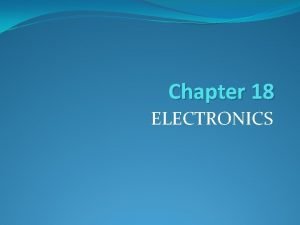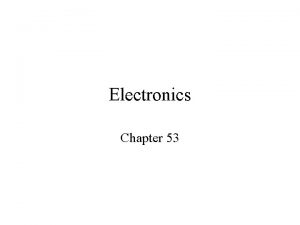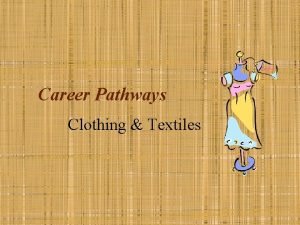Conductive Textiles Where Electronics Meet Textiles Workshop with




















- Slides: 20

Conductive Textiles Where Electronics Meet Textiles Workshop with Lynne Bruning and Troy Robert Nachtigall Sponsored by Spark Fun and Plugand. Wear Versione 3. 0 - January 2010

Different Materials have different Conductivity

Conductor? NON- INSULATORS CONDUCTOR SEMI CONDUCTOR SUPER CONDUCTOR

Conductive Yarns

Filament, Spun coated, and Ply Yarns

MAking Condutive Thread

Mixing Conductive and nonconductive Fibers Current/conductivity in thread depends upon three major factors: 1. Conductive Material Used 2. % of Conductive Fibers 3. Longitudinal Configuration & Horizontal Configuration

Conductive Fibers - metals – copper, silver, stainless steel, brass, Monel (Nickel) metallized fibers - polyamide/silvercarbon

Fiber Horizontal Configurations Natural Dog Bone Triorbial Circular Segmented Hollow Core

Fiber Longitudinal Configurations • Straight • Twisted • Coiled • Crimped

All conductors have resistance • Wearable electronics have more resistance because they are part non condutor. • We can create a variable resistor (or Potentiometer) by attaching a jewelry closure.

Let’s Try it

Let’s Try it

Electricity in simple knitted fabrics

Pressure sensitive fabric Characteristics Activation force 3. 6 Kg per 50 mm diameter • More then 1. 000 cycles • For a 15 cm x 20 cm switch resistance when pressed: around 200 Ohm, open circuit when non pressed û

Pressure sensitive fabrics Innovative aspects • • • No need of further production steps Low cost Transpiring Semi-transparent Flexible Different activating pressures Matrix switches Large area switches (50 cm x 50 cm) Skin compatible materials

State Change Detection • Load up the sketch /Examples/Digital/St ate. Change. Detectio n • This sketch counts how many times a button is pressed

Textile button sensors 2 • • • 1 Two different hookups Normal Button Resistor 2 1

textile perfboard

Velostat
 Peace be with you till we meet again
Peace be with you till we meet again Spraylat copper conductive coating
Spraylat copper conductive coating 3m acf
3m acf Inductive clamp locating method
Inductive clamp locating method Sony acf
Sony acf Respiratory zone
Respiratory zone Conductive pdms
Conductive pdms Conduct disorder definition
Conduct disorder definition Are spider webs conductive
Are spider webs conductive Pathway of direct light reflex
Pathway of direct light reflex Channelstrim
Channelstrim Conductive wireless charging
Conductive wireless charging Conductive hearing loss lateralization
Conductive hearing loss lateralization What is textiles
What is textiles Mind map art gcse
Mind map art gcse Gt textiles
Gt textiles Thermochromic textiles
Thermochromic textiles Polimeros textiles
Polimeros textiles Charles rennie mackintosh textiles
Charles rennie mackintosh textiles Textiles production systems
Textiles production systems Is the basic unit from which any fabric is made
Is the basic unit from which any fabric is made




